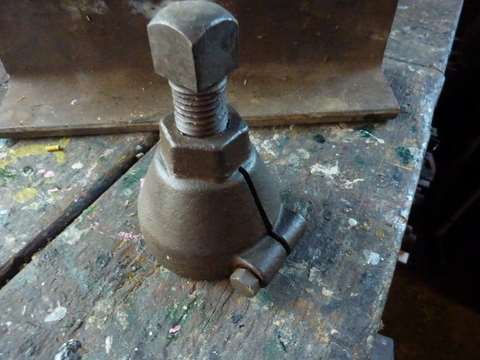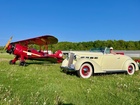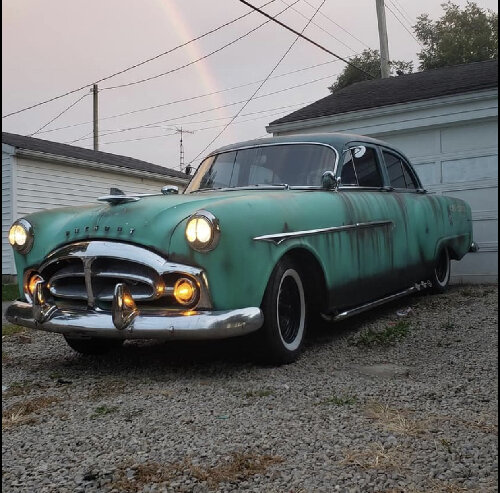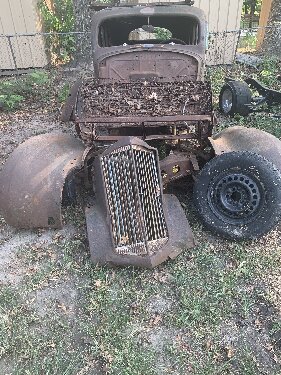|
Re: 1928 rear drums
|
||||
|---|---|---|---|---|
|
Home away from home

|
Tried to attach a photo of the puller, hope it works.
Attach file:  (27.69 KB) (27.69 KB)
Posted on: 2013/3/31 1:48
|
|||
|
||||
|
Re: 1930 shifter missing part
|
||||
|---|---|---|---|---|
|
Home away from home

|
Very impressive work, That part on both of my 633's was badly worn on the lug so I simply built them up with electric welding and hand filed them to size. They have been in use for a while now with no indication of further wear.
Posted on: 2013/3/29 17:03
|
|||
|
||||
|
Re: Wade's Workshop
|
||||
|---|---|---|---|---|
|
Home away from home

|
Mal, That 05 Cadillac looks more like a 1908 International High Wheeler to me. Any experts out there who can confirm?
What a fantastic original survivor David
Posted on: 2013/3/4 5:54
|
|||
|
||||
|
Re: Pullman Bodies
|
||||
|---|---|---|---|---|
|
Home away from home

|
Bernie/ OD , I don't believe that the table of Pullman built bodies is confined to the 116 cars. All of the 1922 cars listed with body numbers such as 224 for the Sport and 222 for the Coupe refer to the 1922 126 bodies not the 116 bodies.
I found another reference on page 231 of the Kimes book (that is not referenced in the index) and it states, referring to Pullman "In 1921 and 1922 this firm had orders for 13,655 bodies for all 126-133 series cars except for the seven passenger sedans and limousines" Numbers of bodies are given that do not entirely tie in with the table, The 222 coupe is listed as having had 1550 bodies made by Pullman whereas the above table lists 850 . OD I am sure there is limited interest in this topic but you can be sure there are at least 2 of us very interested, thanks for your input
Posted on: 2013/1/22 2:52
|
|||
|
||||
|
Re: Pullman Bodies
|
||||
|---|---|---|---|---|
|
Home away from home

|
There is are further references to Pullman on pages 420 and 421 of the first edition of the Kimes book, on page 420 it refers to Packard making chassis available to independent coachbuilders such as Brewster Fleetwood etc then it goes on to say that in the post WW1 era Packard "sublet much of its production body requirements to Anderson, Buffalo, Pullman ..........." etc.
On page 421 it talks about body building in the mid 1920's and it states that Packard was becoming disenchanted with its vendor body building program and problems and disputes arising from cancellation when bodies were not required due to reduced production. I conclude from this that Packard sublet some of its body manufacture to a number of companies including Pullman in the era leading to the mid 1920's and these were all standard Packard bodies not be confused with the custom body work carried out by the independent coachbuilders such as Brewster, Dietrich etc. The additional material referred to by OD will no doubt shed more light on this.
Posted on: 2013/1/21 16:59
|
|||
|
||||
|
Re: Pullman Bodies
|
||||
|---|---|---|---|---|
|
Home away from home

|
Bernie,
I would also be interested to know more about this topic, my car (as you know) is a 1922 126 "Sport" which was a very low volume model produced by Packard. The Kimes book says that only 400 of the Sport body was made on the 126 model although the numbers that have survived would indicate that maybe they made a few more than that. However I have been told over the many years that I have had mine that Packard outsourced the Sport bodies to Pullman. There seems to be some evidence to support this however it does not mean that there is anything special about the Pullman bodies, they are not badged as such and in the case of the Sport they are all steel. It has been suggested to me that the workmanship was inferior to the bodies made in house by Packard and having restored mine from scratch I can confirm that the original panel work was nothing special and a bit rough in places. However I have no factual information on all of this and I hope someone else will have more information. David.
Posted on: 2013/1/21 1:18
|
|||
|
||||
|
Re: 1928 526 block removal
|
||||
|---|---|---|---|---|
|
Home away from home

|
Dell, How to locate the distributor drive gear is a good question, unfortunately I don't have a good answer. Mine did not have any markings so I set the engine on TDC number 1 cylinder firing stroke and then by trial and error found the position of the square drive shaft that had the rotor pointing at no. 1 HT post I hope someone else can give a better answer.
Posted on: 2012/12/23 2:33
|
|||
|
||||
|
Re: 1928 526 block removal
|
||||
|---|---|---|---|---|
|
Home away from home

|
OD:
It was done just as you describe, there is not much more I can add. I starting with all pistons on TDC initially then rotated the crankshaft to receive pairs of big ends and pushed those two pistons down from the top to meet the crank. I recall having to find the best initial position for the crankshaft so that when turning the crankshaft it cleared the free hanging con rods, but it became easier as each pair were connected. I did this whole operation twice about a year apart, firstly after the block had been pinned then again with the "new" replacement block. I hope not to have to go through that all again!
Posted on: 2012/12/20 16:01
|
|||
|
||||
|
Re: 1928 526 block removal
|
||||
|---|---|---|---|---|
|
Home away from home

|
Dell,
The big ends on the 633 are too big for the bore so I simply lifted the block off the crankcase with the pistons after removing the big end caps. I don't know whether this applies to the 526. To reassemble it I fitted the pistons to the block before lowering it into position while turning the crankshaft to receive the big ends. I did it alone but it would be easier with 2 people. I am pretty sure I only tilted the radiator forward enough to remove the water pump but it would be easier to remove the radiator . I would like comment on the cracks because I had a similar problem. My car had a number of cracks between the valve seats. I discussed the problem with a number of experts and was persuaded that there was a good chance that the cracks could be pinned (Metalock) and I had this done by a very reputable operator who said that the risk was that there would not be enough metal thickness to support the pins. The repair failed very quickly and I believe that years of internal corrosion had weakened the block causing the cracks and causing the failure of the pins - I would not try this process in a combustion chamber again. I discussed welding of the block with a company that had a good reputation for this type of work on old engines. They advised that the repair would probably be successful, it would be very expensive and once completed the bores and all faces would need to be re-machined to rectify the distortion caused by the welding. I did nothing for a while and was extremely fortunate in having a friend donate his spare block which I had sleeved to take the new pistons from my engine and the car has been good since. Turning to you car and assuming you do not have a spare block, any attempt to repair it will probably require valve inserts and cylinder sleeves, after the cracks are welded or pinned. The cracks would indicate that it is very likely that your block has lost much of its strength to corrosion and this would put at risk any repairs. I doubt that a block that has failed as your has would have the strength to hold the interference fit valve inserts bearing in mind that they do not strengthen the block but increase the stress around the valve seat area. This is simply my opinion, and I would welcome expert advice if I am wrong. Keeps us posted on how you fix it. David
Posted on: 2012/12/20 4:14
|
|||
|
||||








